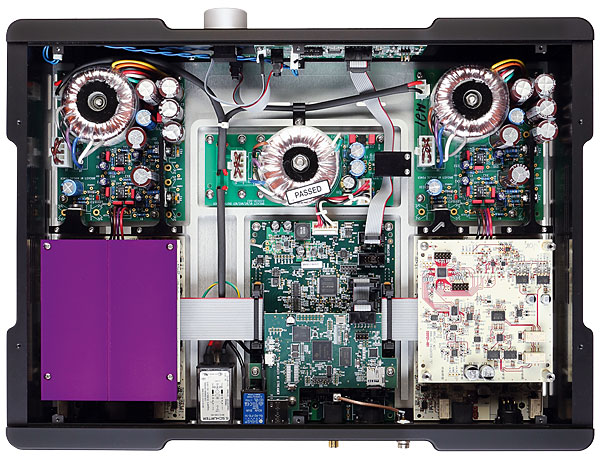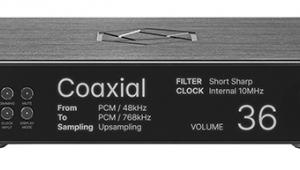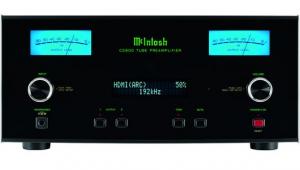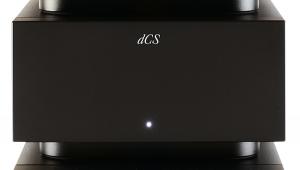Bricasti M21 Networked-Attached DAC

 A decade on from the brand-defining M1 DAC and Bricasti has poured all its latter day experience into a new flagship featuring bespoke DAC and clocking technologies
A decade on from the brand-defining M1 DAC and Bricasti has poured all its latter day experience into a new flagship featuring bespoke DAC and clocking technologies
Bricasti Design is not an adherent to the 'keep your range rolling' philosophy. Likely informed by its professional audio heritage, it keeps new arrivals to a minimum. So the launch of the M21 DAC, a flagship D/A converter to replace the £9600 M1 of 2011 HFN Jun '11], is of interest particularly when you clock the updates the Massachusetts-based company has implemented, and its £17,249 price tag.
There are things that haven't changed much in the intervening years, including the M21's choice of third-party DAC, which remains Analog Devices' AD1955, two used in a dual mono configuration. And once again, the fully balanced circuit path includes separate, isolated power supplies for each channel.
Going Native
Yet several additions mark this model out as a serious update on the M1, and help explain the leap in price point. First, there's its native DSD decoding and separate 1-bit DAC, as seen recently on the company's more affordable (£6999) M3 network DAC /headphone amp [HFN Jun '20]. This is described by Bricasti as a 'true one-bit modulator of our own design and unique to the industry.' There is still the option of using the AD DAC for DSD conversion, but it'll be converted to LPCM along the way.
For PCM sources, the M21 also introduces an alternative, bespoke ladder DAC option which, like the Analog Devices path, can be used with linear and minimum phase filters, both offered in '0' and '1' flavours. There's then something not mentioned in the otherwise comprehensive user guide, as it arrived via a firmware update: 'Wide' and 'Fine' options for the M21's Direct Digital Synthesis [DDS] clock recovery. So this new Bricasti model now combines three DAC topologies and four digital filters to tempt the audiophile, though they cannot all be 'mixed'.

The brand, which was founded in 2004 by ex-Lexicon engineer Brian Zolner, has two product categories under its consumer umbrella: Classic and Platinum. The latter features iterations of its costlier models, including the M20 preamp [HFN Nov '20], M32 monoblock and M21 we have here, though the £3000 price premium for a platinum-finished chassis and gold-plated buttons hardly makes it an impulse buy.
Even in the standard 'Classic' guise this DAC is lovingly built, with its black case, and silver top, all machined from solid aluminium. Four circular stainless feet, from specialist Stillpoints, provide a vibration-nulling platform for the 6.8kg chassis.
Supplied with the M21 is a palm-sized, heavyweight remote control that offers six buttons: status, balance, input, level (Bricasti has added an analogue preamp stage) and up/down keys. This allows sofa-based browsing and control over the DAC's menu systems, and – as further evidence of Bricasti's build quality ethos – replaces a slip-off battery cover with a screw-backed panel.
Making A Connection
If the M21's DAC and filter options seem generous the same can be said of its connectivity. The most prosaic is Toslink optical, supporting 96kHz, which is flanked by two 192kHz-capable S/PDIF coaxial connections, and an AES/EBU input supporting 192kHz and DSD64 over DoP. For computer/network setups, the M21 also has USB-B and Ethernet LAN sockets supporting 384kHz LPCM and DSD (DSD64 natively and DSD128 as DoP). There are also balanced XLR and unbalanced RCA outputs, plus a 12V trigger to sync with, for example, Bricasti's partnering power amplifiers.
Considering Bricasti's pro audio origins, it's not surprising to find the M21 falls a little way short of the user-friendly nature of some rivals. It's not overly complicated, thanks to a front-panel display with easy-to-read text, and once you've familiarised yourself with the way this can be navigated by the remote, operation is largely plain sailing. Yet there are some discrepancies between its front panel control and the handset – the Reference mode, which enables menu settings to be saved for instant recall, is only accessible via the M21's fascia, for example. Some might also wish for a custom app to complement the DAC's DLNA playback support.

























































